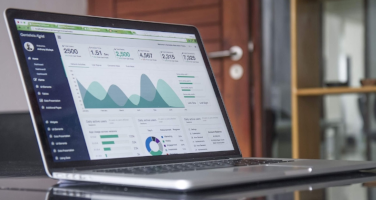If you’re running an online marketing campaign, you’re likely using landing pages to drive conversions.
A well-crafted landing page can be extremely effective for converting visitors into leads or customers. To make the most of what a landing page has to offer, though, it’s important to carefully monitor it and make necessary changes over time. This ensures that your landing page is current with your existing campaign efforts and responds to the behaviors of your target audience.
In this article, we’ll take a look at some best practices for landing page monitoring and how you can use those insights to boost your conversions.
How to monitor your landing page conversions?
There are a few key landing page metrics that you can use to determine how well your landing page is performing. Each of these metrics is based on the behaviors of your landing page visitors and can reveal how engaging and relevant the content of your landing page is.
Bounce rate
If you’ve ever paid attention to your landing page traffic in analytics, you’ve likely heard the term “bounce rate” before.
A bounce rate is the percentage of people who leave your site after viewing the first landing page that is pulled up following an initial interaction. When a bounce rate is high, it’s usually an indication that something on the landing page is driving people away. This can be attributed to a number of factors: slow page loading times, a lack of relevant landing page copy and content, or a low incentive for visitors to remain on the site.
There are a few strategies you can implement to decrease your bounce rate, and they are usually easy fixes! We’ll get into those in more detail down below.
Time on page
You should determine how much time users spend on your landing page before leaving. This landing page metric is similar to a bounce rate in that it can reveal how engaging and effective the design of your landing page is.
A typical benchmark for time on a page hovers right around 50 seconds. If you find that your landing page has unusually short visits and that people are bouncing away from your page quickly, it’s likely because they’re not finding what they’re looking for. This may translate to ineffective landing page design or a scope that is too narrow.
In some cases, it may be worthwhile to consider using a more robust content experience to alleviate this, like a microsite.
On the other hand, if people are spending a lot of time on your page but you are still seeing low landing page conversion rates, your conversion efforts alone may be ineffective, and you may need to rework your CTAs.
Conversion rate
Your landing page’s conversion rate is the bread and butter of your online marketing efforts.
Your conversion rate tells you what percentage of people who visit your landing page actually become leads or customers. The metric is determined by different action items you propose to your landing page visitors, like filling out content forms, signing up for newsletters, or closing sales following a landing page visit.
Low conversion rates may be a reflection of ineffective calls-to-action or design tweaks that need to be made.
Click-through rate
A click-through rate refers to the frequency that landing page visitors engage with links and ads on your page. It’s a reflection of engagement with your CTAs and other content that you chose to include on your landing page.
Click-through rates are important metrics that reveal how successful your landing page is at engaging visitors. Relevant content that is clear and specific is more likely to have high click-through rates. A low click-through rate could indicate that your CTAs or content isn’t relevant enough to drive action.
Optimize and improve your landing page conversion rate
Optimizing to increase your landing page conversion rates can boost revenue and create additional opportunities for lead capture. There are some best practices for landing pages that will help you improve your landing page conversions. In fact, many of these practices apply not only to landing pages but to websites and microsites as well!
Make sure your landing page copy is relevant
If you have high bounce rates or a short average for the time users spend on your landing page, you may want to reassess the content included in it.
One common reason for high bounce rates is that visitors land on a page that doesn’t contain information they are expecting to see. This, in part, can result from inaccurate or irrelevant titles and meta descriptions. Ensuring that the content and titles on your landing pages accurately reflect the content they share can keep bounce rates low and increase the length of users’ visits.
Relevant content can also help you maintain brand image and credibility, too! If visitors feel baited by your titles and meta descriptions, they may perceive future content as spam. There are additional landing page design best practices you can use to address credibility as well.
Streamline your landing page design
If your landing page is not easy to navigate or appears cluttered and confusing, visitors will be quick to abandon the page.
Thoughtful landing page design should strive to make information easily accessible and also add credibility to your brand. Keeping the design clean and simple with key information at the center of your landing page ensures that your visitors find what they need quickly and can engage with CTAs effortlessly. Some design strategies can even boost conversions, like including your CTAs above the fold of your landing page.
Cluttered, busy design can be confusing and off-putting for visitors. Remember to be consistent with existing branding and to prioritize action-oriented behavior when considering the design of your landing pages.
Test out different campaign landing page versions to see what performs best
With all of these metrics at your disposal, you can easily work and rework your landing page as needed. The best landing pages respond to the needs and behaviors of their visitors to ensure that they drive action, generate leads, and ultimately boost revenue.
A/B testing is especially helpful for doing this. The process involves the creation and deployment of two different versions of a landing page so that they can be measured against one another to determine which version performs better. It makes it easy to pinpoint which aspects of a design are most effective at engaging users, so don’t be afraid to experiment!
Visitors can spend more time looking through relevant content on a microsite
While landing pages can be effective tools for driving action and generating leads, you may find that their limitations are too narrow in scope for your goals. A microsite is a perfect balance between the niche focus of a landing page and the robust capabilities of a website. Microsites make it easy to create an immersive content experience that is flexible enough to include multiple subpages and personalized enough that you can create a totally targeted content experience.
Zoomforth microsites offer additional features that traditional landing pages may not, including advanced security features like SAML log-ins and micro and macro-level analytics. You can easily create a microsite template that can be customized with a drag-and-drop editor so that the design of your microsite is always crafted with conversion in mind, no matter who is visiting.
Want to learn more about what microsites can do for you? Try out a free demo of Zoomforth today!
Photo by Carlos Muza on Unsplash



